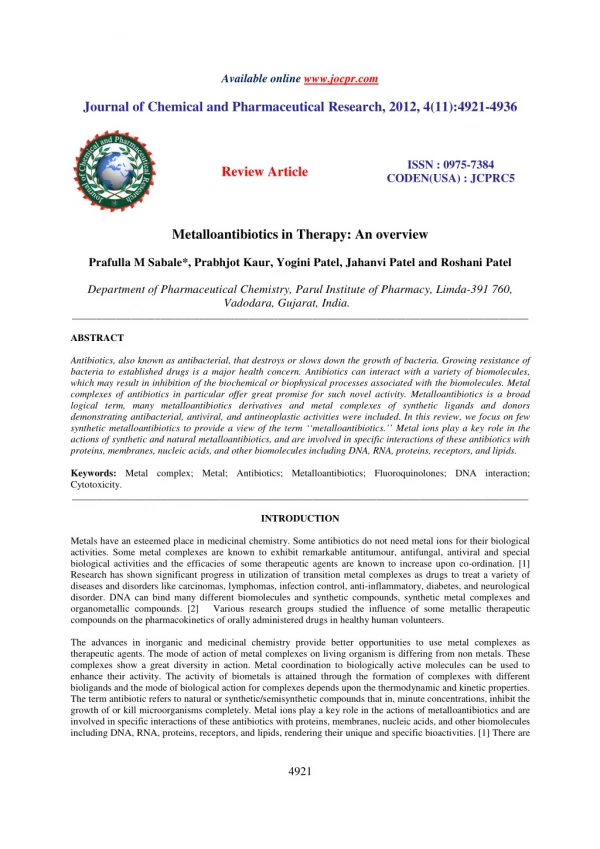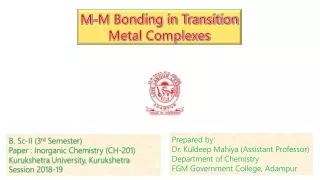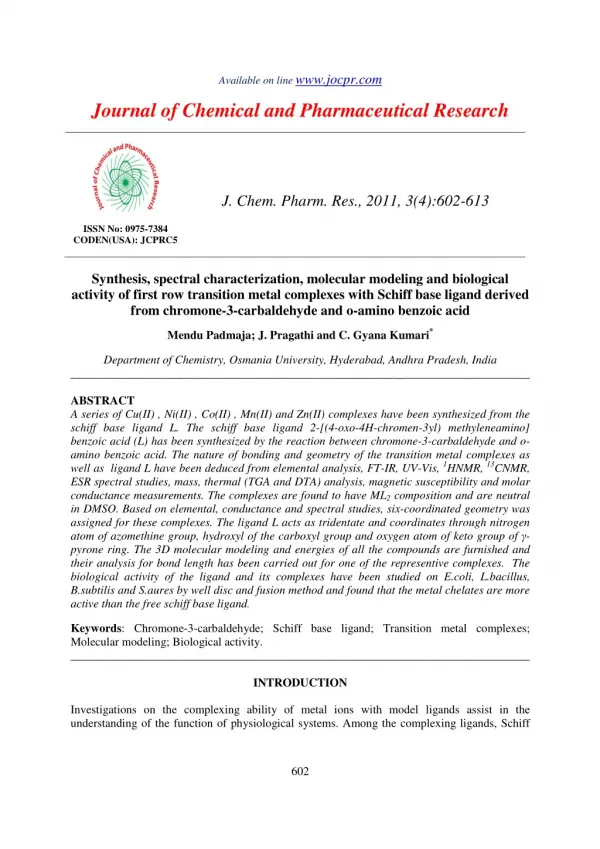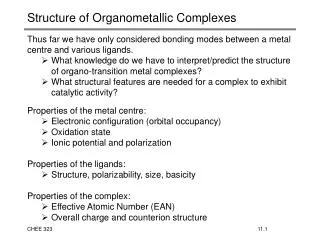Synthesis, spectral characterization, molecular modeling and biological activity of first row transition metal complexes
A series of Cu(II) , Ni(II) , Co(II) , Mn(II) and Zn(II) complexes have been synthesized from the schiff base ligand L. The schiff base ligand 2-[(4-oxo-4H-chromen-3yl) methyleneamino] benzoic acid (L) has been synthesized by the reaction between chromone-3-carbaldehyde and oamino benzoic acid. The nature of bonding and geometry of the transition metal complexes as well as ligand L have been deduced from elemental analysis, FT-IR, UV-Vis, 1HNMR, 13CNMR, ESR spectral studies, mass, thermal (TGA and DTA) analysis, magnetic susceptibility and molar conductance measurements. The complexes are found to have ML2 composition and are neutral in DMSO. Based on elemental, conductance and spectral studies, six-coordinated geometry was assigned for these complexes. The ligand L acts as tridentate and coordinates through nitrogen atom of azomethine group, hydroxyl of the carboxyl group and oxygen atom of keto group of γ- pyrone ring. The 3D molecular modeling and energies of all the compounds are furnished and their analysis for bond length has been carried out for one of the representive complexes. The biological activity of the ligand and its complexes have been studied on E.coli, L.bacillus, B.subtilis and S.aures by well disc and fusion method and found that the metal chelates are more active than the free schiff base ligand.
★
★
★
★
★
195 views • 12 slides










![Anti-tumor activity of N4[(E)-1-(2-hydroxyphenyl)methylidene]iso-nicotinohydrazide and Its Ti (IV) and Cu (II) complexes](https://cdn4.slideserve.com/7781333/available-on-line-www-jocpr-com-dt.jpg)
